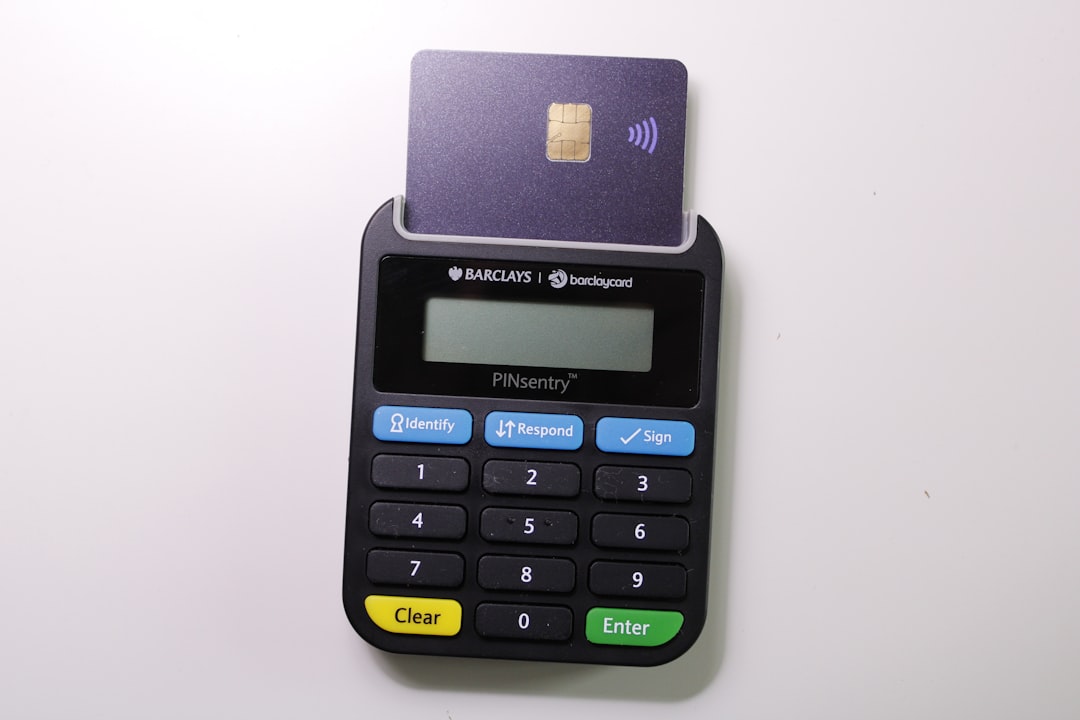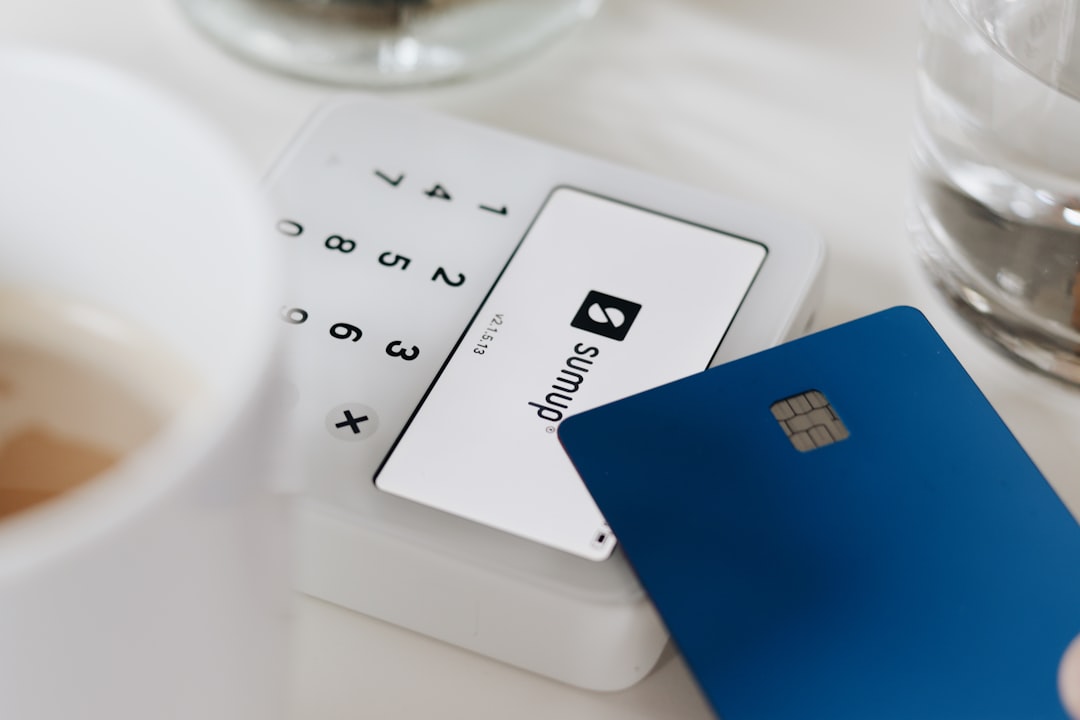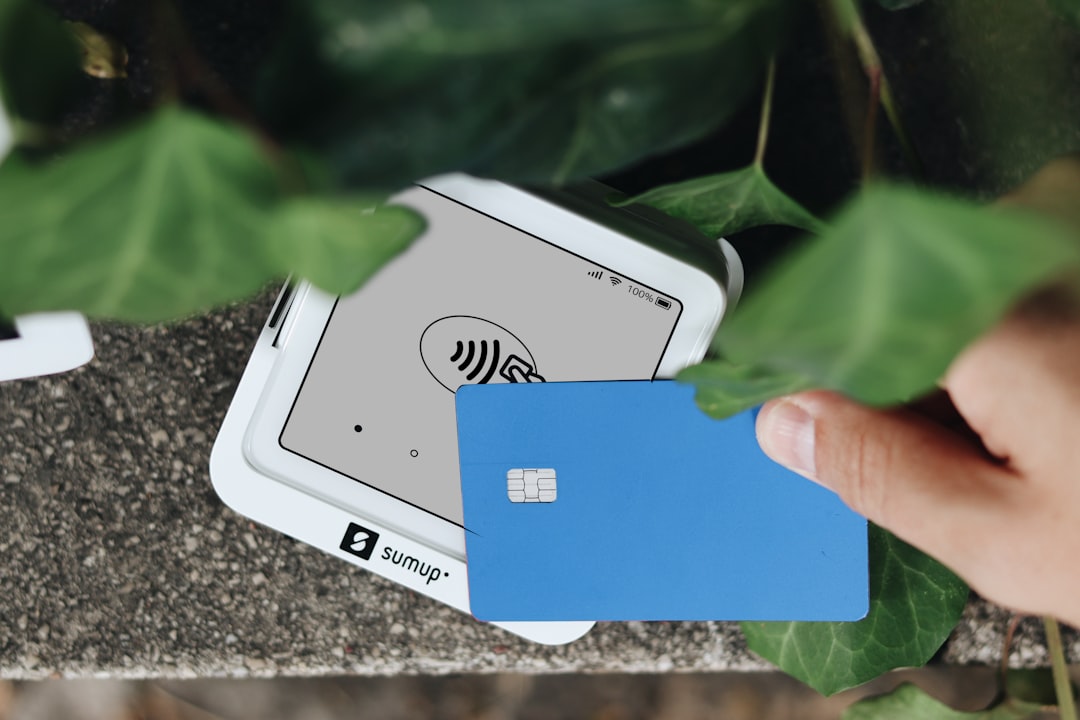

Engage prospects with a scan and streamline customer engagement with FREE QR code marketing tools by Sona – no strings attached!
Create a Free QR CodeFree consultation

No commitment

Engage prospects with a scan and streamline customer engagement with FREE QR code marketing tools by Sona – no strings attached!
Create a Free QR CodeFree consultation

No commitment
Prepaid credit card providers are at a pivotal moment in the evolution of financial services, navigating both increasing consumer demand for flexible payment solutions and mounting pressure to expand financial inclusion. As customers seek mobile-friendly and secure alternatives to traditional banking, QR code technology has emerged as a strategic lever for prepaid card brands aiming to deliver more seamless onboarding, support, and engagement experiences.
Traditional methods such as physical application forms, static brochures, and underperforming point-of-sale materials often create barriers that deter signups, limit education, and slow conversion velocity. A common frustration within the industry is missing high-value prospects who interact with marketing collateral but never convert, largely because these interactions remain untracked and disconnected from CRM or attribution frameworks. Read Sona’s blog post titled Single vs Multi-Touch Attribution Models.
Integrating QR codes into the prepaid credit card provider experience helps eliminate these analog bottlenecks. Marketers, growth strategists, and product leaders can now use QR-driven tools to capture prospects who would otherwise remain anonymous, qualify genuine demand more effectively, and achieve full-funnel attribution from initial engagement through card activation and beyond. Explore Sona QR’s product overview.

QR codes bridge the gap between physical touchpoints and the digital onboarding experience, making it easier for prepaid credit card providers to drive higher cardholder engagement and conversions. By placing a scannable connection wherever attention is highest, you can move people from curiosity to a measurable step, such as application start, instant activation, or rewards enrollment.
Challenges often arise when static brochures, paper forms, and manual activation sheets create too much friction, discouraging potential cardholders from completing the signup journey. Lost prospects are all too common when there is no way to track interest from offline engagement to online conversion, which leads to wasted spend and missed revenue. QR codes resolve this by compressing the distance between interest and action, while also capturing valuable first-party data that improves segmentation and retargeting.
Providers that systemically address friction at each touchpoint are able to convert high-intent interest that might otherwise be lost. With an integrated platform like Sona QR, teams can retarget, nurture, and qualify offline audiences within one connected workflow and achieve full-funnel visibility from first scan to reload and repeat use.

Inconsistent messaging, limited visibility, and disconnected campaigns have long plagued prepaid credit card marketers. QR codes solve a spectrum of contemporary challenges in the prepaid card market, especially for teams struggling to understand buyer intent or to bridge the offline-to-online divide. They create a seamless onramp to digital experiences, while capturing data that reveals what content, offers, and placements resonate.
From compliance-driven disclosures to dynamic offers that change by region or season, QR codes give providers a flexible way to adapt without reprinting or retraining entire field teams. This agility reduces operational drag and helps marketing and product teams stay aligned on the latest positioning and policy changes.
Typical use cases include QR codes on packaging for instant activation, direct mail for reward opt-ins, and event displays for onboarding. These are especially effective for unbanked and underbanked audiences who value clarity, quick access, and mobile convenience. By simplifying critical steps and providing transparent information, QR codes help convert interest into long-term engagement.

Prepaid credit card providers encounter a variety of customer scenarios where missed opportunities or lack of actionable next steps hinder program growth. Flexible QR code formats let teams match the right action to each context, so every scan leads to a meaningful outcome.
Dynamic QR codes are ideal for most campaigns since they allow teams to update the destination, track scans, and run A/B tests without replacing printed materials. Static codes can be reserved for evergreen or compliance-approved content that rarely changes. The right approach usually blends both, with dynamic codes taking the lead in acquisition, activation, and loyalty use cases.
Dynamic QR codes are preferred for marketing and product-led growth. They ensure messaging remains consistent and free of dead ends, which supports campaign compliance, brand consistency, and better customer outcomes.

Growth-focused prepaid card marketers have long faced issues like undetected high-fit prospects and inconsistent messaging across channels. Strategic QR placement delivers a corrective by making every physical impression a gateway to a measurable digital journey. The result is cleaner attribution, higher conversion rates, and a faster feedback loop.
Prioritize placements where intent peaks, hesitation is common, or education is necessary. By surrounding those moments with clear calls to action and mobile-first flows, you move prospects from awareness to action while capturing the data needed for retargeting and optimization.
Top-performing teams place QR codes where curiosity is highest but online conversion is not guaranteed. They then use the resulting data to enrich CRM records, trigger nurture sequences, and learn which messages unlock movement through the funnel.

QR codes shine in moments that benefit from speed, clarity, and proof of value. The following use cases map directly to customer pain points, from the first interaction through ongoing usage and advocacy.
By layering each use case with analytics and CRM integration, providers transform anonymous engagement into structured, measurable journeys. This expands top-of-funnel volume while increasing the proportion of prospects who reach activation, reload, and repeat usage milestones.
Each use case reduces friction in the journey and builds a richer data foundation. Over time, these assets improve marketing efficiency and increase the lifetime value of acquired cardholders.
Traditional marketing often fails to connect who scanned, why they engaged, and what actions followed. Without this context, retargeting becomes blunt and inefficient. QR codes change that equation by turning every physical interaction into a tagged, time-stamped signal that can be synced to CRM and ad platforms for precise follow-up. For step-by-step tactics, see Sona’s Playbook titled Intent-Driven Retargeting: Driving High-Impact Campaigns with First-Party Intent Signals.
Prepaid credit card providers can design QR campaigns that segment audiences by product interest, funnel stage, and intent. This allows for personalized nurture, such as sending travel perks to users who scanned a travel card promo or promoting reload bonuses to active spenders.
With Sona QR, every code is a smart entry point. The platform captures scan data, enriches profiles, and pushes audiences to your marketing stack so you can nurture based on real behavior instead of assumptions.
Many prepaid card providers face campaign fragmentation caused by disconnected channels, inconsistent messaging, and siloed data. QR codes offer a concrete way to unify efforts by transforming every offline asset into a measurable path to a digital experience. This creates continuity across channels and gives teams the insight needed to optimize in near real time.
As you integrate QR codes, align messaging and destinations with the surrounding context. Someone scanning a billboard during a commute needs a simple teaser and a fast, mobile-first page. Someone scanning a card carrier needs a direct activation sequence with step-by-step guidance and support options.
QR codes serve as the offline onramp to your digital marketing engine. With a centralized platform like Sona QR, teams can manage all codes from one dashboard, monitor performance by channel, and sync scan data to CRM and ad platforms for smarter, faster decision-making.
Even the best QR strategies can fail without consistent execution. Gaps such as dead links, generic destinations, and untagged scans lead to lost attribution and wasted budget. The following checklist turns strategy into repeatable, analytics-driven practice that compounds value over time.
A structured approach also reduces compliance and legal risk by centralizing control of destinations and tracking what was shown to whom and when. This is vital for prepaid providers who must document disclosures and version control for audits.
Clarify the specific business outcome. Examples include rapid application start, instant activation from mailers, rewards opt-in at retail checkout, or fee disclosure acknowledgement. Select one primary goal so that success can be measured cleanly, then add secondary goals if needed.
Map the use case to a physical context. A branch poster might focus on approval speed, while a card carrier should focus on activation in under two minutes. For prepaid programs, strong early use cases include instant activation and first reload, since they correlate with long-term value.
Use dynamic QR codes for most campaigns. They enable tracking, A/B testing, and destination updates without reprinting, which is critical for compliance changes or offer refreshes. Static codes are suitable for evergreen destinations such as a generic support page or a long-lived educational video.
If you expect to run segmented offers, build a code taxonomy from the start. For example, ACQ-DM-Q4-StudentOffer-US-South makes later analysis and governance significantly easier. Sona QR supports campaign naming conventions and metadata so teams can search, filter, and update at scale.
Brand the QR module with a clear frame, a benefit-driven headline, and an explicit CTA such as Scan to activate instantly or Scan for fees and limits. Add a short URL fallback beneath the code for users who cannot scan. Maintain sufficient quiet space, contrast, and minimum size for scannability.
Test each code on multiple devices, operating systems, and lighting conditions. Validate all analytics parameters and ensure the destination page is mobile optimized, fast, and aligned with the promise in the CTA. Run a small in-branch or in-store pilot to validate uptake before rolling out broadly.
Prioritize placements with proven reach where attribution has historically been weak. Direct mail, card packaging, branch signage, retail POS, and out-of-home are dependable starting points. Match the destination to the scanning context, and localize when relevant to reflect regional fee charts or partner offers.
Sequence your rollout to prevent operational strain. For example, launch activation and rewards in phase one, then add reload incentives and referral flows in phase two. Use Sona QR to management-tag each code by channel and creative so performance comparisons are simple and credible.
Instrument each QR destination with UTM parameters and event tracking. Measure scan volume, scan-to-start rate, application completion rate, activation within 7 days, and first reload within 30 days. Break down results by channel, creative, and geography to identify winners and underperformers.
Act on insights in near real time. If a particular card carrier variant drives faster activation, roll it out system-wide. If a branch poster underperforms, test a new CTA or reposition it for better line-of-sight. With Sona QR and Sona.com, you can connect scans to downstream events, trigger nurture flows, and attribute revenue to physical placements.
For prepaid credit card providers, the inability to tie marketing actions to revenue outcomes has been a persistent challenge. Many teams can measure impressions but not progression, which leads to guesswork about what truly drives funded accounts, reload frequency, and lifetime value. QR analytics offer a remedy by attaching deterministic identifiers and context to every offline touchpoint. For strategy, see Sona’s blog post titled The Essential Guide to Offline Attribution.
A robust measurement strategy connects scans to the entire lifecycle. This includes application starts, KYC completion, activation, funding, reload, and ongoing usage milestones that predict retention. By mapping this flow, you can attribute revenue to the channels and messages that deserve it, not the ones that simply shout the loudest.
Teams that adopt this approach move from anecdote to evidence. They shift budget to what works, sunset tactics that do not, and continually improve the cardholder journey using data rather than intuition.
Bringing QR programs to maturity requires a disciplined approach to tracking, segmentation, and enablement. Many programs stall because codes are generic, destinations are not mobile-first, or staff are not trained to promote scanning. The following best practices address these pitfalls head-on.
Make every code carry a job to be done. If a scan cannot be tied to a specific action like activation, enrollment, reload, or referral, it is less likely to generate measurable value. Clarity drives both user behavior and internal accountability.
Creative deployment options include QR codes on loyalty cards that enroll customers in reload bonus programs, or on in-aisle signage that educates shoppers about prepaid gift cards and drives immediate activation. With Sona QR, you can generate, brand, and track all codes in minutes and scale with confidence.
QR codes succeed when they solve a pressing problem for the user and the business at the same time. The following examples illustrate how prepaid providers can lift conversion and retention by aligning placement, promise, and payoff.
Use these patterns as inspiration, then adapt them to your brand voice, regulatory environment, and partner landscape. Small variations in CTA wording, incentive framing, and visual hierarchy can significantly affect performance, so test and refine.
These examples demonstrate how thoughtful QR deployment addresses misattribution, reduces churn, and unlocks new growth levers at every stage of the cardholder lifecycle.
To avoid the most frequent breakdowns in QR execution, prepaid providers must focus on visibility, destination quality, and staff enablement. Low scan rates often stem from awkward placement or unclear benefits. Dead ends occur when codes lead to generic pages that do not match the promise of the CTA.
Treat the QR module as a mini campaign. It needs a headline that conveys a benefit, a CTA that tells people exactly what they get, and a destination that delivers on that promise without confusion or delay. Anything less introduces friction that depresses conversion and undermines trust.
A disciplined focus on these elements builds stronger connections with prospects and cardholders, raises ROI, and ensures every touchpoint contributes to measurable growth.
QR codes are transforming how prepaid credit card providers blend physical marketing with digital action. By addressing challenges such as missed attribution, anonymous prospects, and fragmented campaigns, QR deployment delivers instant engagement, measurable results, and cohesive journeys from offline to online. Providers who build data-driven QR experiences not only improve acquisition and retention, they also create a scalable foundation for continual learning and customer-centric growth.
With rapid advances in mobile and contactless solutions, prepaid providers that leverage QR codes can create differentiated experiences, grow faster, and capture more value from every engagement. Pair high-potential offline assets with trackable, actionable QR touchpoints, then connect scan activity to CRM and attribution. Platforms like Sona QR and Sona.com help you launch quickly, monitor performance in real time, and link scans to revenue so you can scale confidently and prove impact. Start creating QR codes for free.
QR codes have transformed prepaid credit card providers from simple transaction facilitators into dynamic, data-driven growth engines. By integrating QR codes, providers can streamline customer onboarding, personalize user experiences, and unlock valuable insights into cardholder behavior—all while driving higher conversion rates and increased card usage. Imagine instantly knowing which campaigns encourage card activation or reloads, enabling you to optimize marketing efforts in real time.
With Sona QR, prepaid credit card providers gain the power to create dynamic, trackable QR codes in seconds, update campaigns without costly reprints, and link every scan directly to revenue outcomes. This seamless connection between offline touchpoints and measurable results means no opportunity slips through the cracks—only smarter, more profitable customer journeys. Start for free with Sona QR today and turn every scan into a new cardholder, a loyal customer, or a repeat transaction.
The article does not specify leading prepaid credit card providers by name but highlights platforms like Sona QR that support prepaid card marketing and growth.
Prepaid credit cards integrate QR codes to enable seamless onboarding, instant activation, rewards enrollment, and secure transactions by linking physical touchpoints to mobile-optimized digital experiences.
Prepaid credit cards offer flexible, mobile-friendly payment solutions that support financial inclusion, reduce friction in signup and activation, and provide secure alternatives to traditional banking.
While the article does not list specific providers, it emphasizes that QR code-enabled prepaid card platforms enhance security through features like ID verification and controlled activation flows.
The article references various prepaid card types such as travel cards, student plans, and reloadable cards used for rewards, cross-sell opportunities, and financial inclusion but does not detail all card types explicitly.
Choosing the right provider involves evaluating their mobile onboarding experience, QR code integration capabilities, security features, ability to track and attribute user engagement, and support for compliance and updates.
The article suggests QR codes can deliver transparent and up-to-date fee disclosures and terms instantly to customers but does not list specific fees or charges.
Prepaid credit cards, supported by mobile-friendly QR code onboarding, offer quick access, clarity, and convenience, which help unbanked and underbanked audiences engage with financial services more easily.
The prepaid card market is evolving towards mobile-first, QR code-enabled experiences that improve engagement, attribution, financial inclusion, and scalable, data-driven marketing strategies.
Prepaid credit cards use QR codes on receipts, welcome kits, and in-app messages to prompt users to enroll in cashback and rewards programs during moments of high motivation, reducing churn and encouraging reloads.
Use Sona QR's trackable codes to improve customer acquisition and engagement today.
Create Your FREE Trackable QR Code in SecondsJoin results-focused teams combining Sona Platform automation with advanced Google Ads strategies to scale lead generation

Connect your existing CRM

Free Account Enrichment

No setup fees
No commitment required

Free consultation

Get a custom Google Ads roadmap for your business






Launch campaigns that generate qualified leads in 30 days or less.
